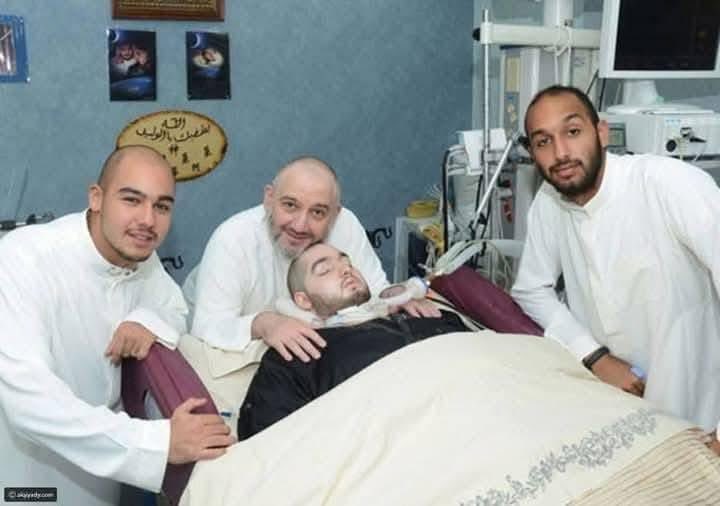Prince Al-Waleed bin Khaled bin Talal, known as Saudi Arabia’s ‘Sleeping Prince’, marked his 36th birthday in a coma—where he has remained since 2005—as the world continues to pray for his recovery.
On April 18, Prince Al-Waleed bin Khaled bin Talal, often called Saudi Arabia’s “Sleeping Prince,” quietly marked his 36th birthday — unaware of the passing years, the changing world, or the heartfelt prayers offered for his recovery.

For nearly two decades, Prince Al-Waleed has remained in a coma, the result of a devastating car accident he suffered in 2005 while studying at a military college. He was just 18 at the time, full of promise and preparing for a future of service and leadership. That future was tragically altered in an instant.
Known for his royal lineage — the son of Prince Khaled bin Talal and a member of one of the Kingdom’s most prominent families — Al-Waleed’s story has moved millions across the Arab world. Videos shared over the years by his family show him connected to life-support machines, yet occasionally responding with slight movements, sparking hope among loved ones and well-wishers.

Despite the passing of years, Prince Khaled and his family have refused to give up on him. They’ve chosen not to withdraw life support, holding steadfast in their belief that recovery is still possible — however slim the chance. Their resilience and faith have become a symbol of unwavering parental love and hope.
In a viral video shared in 2020 on X, Prince Al-Waleed was seen moving his fingers slightly in response to a command, igniting a wave of emotional reactions online.
Many viewed it as a sign that he was still fighting, still present in some way beneath the silence of his condition. In 2019, a video of the Prince slightly moving his head had also emerged. The video went viral across social media platforms.
The prince’s story has since become one of the most heart-wrenching tales from the Kingdom — not only for its tragedy, but for the undying devotion surrounding it. His hospital room has been kept like a place of quiet reverence, and he continues to receive care from dedicated medical staff and round-the-clock attention from his family.
In a world that moves quickly, where stories of hope often fade, the saga of the “Sleeping Prince” continues to stir compassion and reflection. It’s a reminder of life’s fragility, the power of family, and the enduring strength of faith — even in the face of heartbreak.
Other Notable Cases of Individuals in Comas
Prince Al-Waleed's situation is not unique. There have been several other individuals, both past and present, who have experienced prolonged comas due to various reasons:
Terry Wallis: An American man who fell into a coma after a car accident in 1984. He regained consciousness in 2003, 19 years later, making headlines worldwide. Terry Wallis was involved in a car accident in 1984 and remained in a minimally conscious state for 19 years. He regained awareness in 2003, astonishing medical professionals and the public. His case is considered one of the most remarkable recoveries from a prolonged coma.
Jan Grzebski: A Polish railway worker who fell into a coma in 1988 after being hit by a train. He woke up in 2007, having been in a coma for 19 years. Jan Grzebski, a Polish railway worker, fell into a coma after being struck by a train in 1988. He began to regain consciousness in 1992 and fully recovered over the next 19 years. His case is often cited as an extraordinary example of long-term coma recovery.
Otto Warmbier: An American student who was detained in North Korea and fell into a coma under mysterious circumstances. He was released in 2017 but died shortly after returning to the US. Otto Warmbier, a 22-year-old American student, was detained in North Korea in 2016 for allegedly attempting to steal a propaganda banner. He was sentenced to 15 years of hard labor but fell into a coma shortly after his trial. He was released in 2017 and returned to the U.S., where he died shortly thereafter. His case drew international attention to the conditions of detainees in North Korea.
These cases highlight the complexities and mysteries surrounding prolonged comas, as well as the emotional toll on families and communities.


